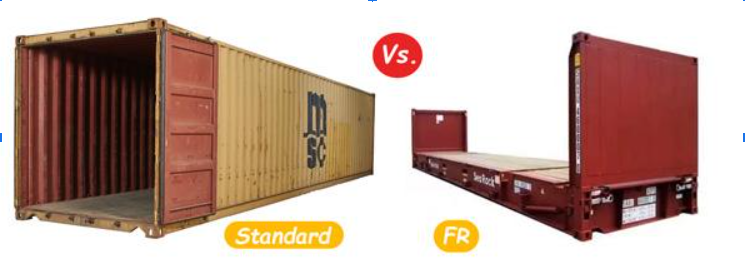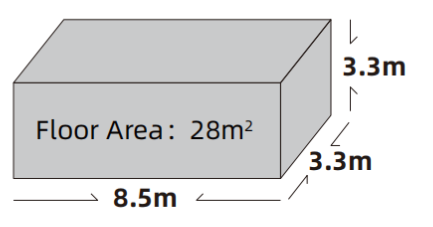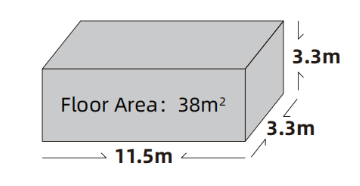If you are a hotelier or someone living business city like New York, wanting to buy his capsule home and stop paying heavy rent, then you are in the right spot. In this blog, you can learn about how to transport your Capsule home from one part of the world to another. So, keep reading!
Table of Contents
1) Choosing the Right Container
First of all, you rent a container big enough to fit your capsule house, whose sizes vary greatly from model to model and even from company to company. Before starting, it is worth noting that containers are available in 3 major sizes;
| Standard Size ( L x W x H ) | High Cube ( HQ ) ( L x W x H ) |
|
|---|---|---|
| 20-foot container | 20′ x 8′ x 8’6″ | x |
| 40-foot container | 40′ x 8′ x 8’6″ | 40′ x 8′ x 9’6″ |
| 45-foot container | x | 45′ x 8′ x 9’6″ |

In addition to container size, there are also types of containers based on how they open, such as;
- Standard ( only the front door open )
- Top opening ( as the name suggests, the top roof of the container comes off ).
- Flat rack ( all walls can be removed )
Normally, standard and top-opening containers are best when delivering small capsules. However, Flat rack containers are the most suggested ones for large capsule homes.
So, if the capsule house unit is small like the E30 models, which only measure about 3.85×2.15×2.5 m, multiple can be put in a single container without even disassembling them. However, for large containers which measure up to 12 m, 3.5 m and 3.3 m ( L x W x H ), they need to be disassembled.
To make it easy to understand, you can learn about LUBAN cabin capsule house models and their perfect container sizes in which they can fit;
| Size | Perfect container Size | Upto XX units in one container | |
|---|---|---|---|
| E30 | 3.85×2.15×2.5 m | 40 HQ | 3 ( assembled ) |
| E50 | 5.8×2.15×2.5 m | 40 HQ | 2 ( assembled ) |
| E70 | 11.5×2.15×2.5 m | 40 HQ | 1 ( assembled ) |
| D50 | 5.8×2.15×2.5 m | 40 HQ | 1 ( assembled ) |
| k70 | 11.5×3.3×3.3 m | 40 FR | 1 ( assembled ) |
| K50 | 11.5×3.3×3.3 m | 40 FR | 1 ( assembled ) |
2) Preparing for Transport
There’s more to transporting a capsule than simply placing it inside a correctly sized container. Several critical steps must always be taken to guarantee its safe arrival at the customer’s location.

+ First, structural reinforcement is very important. Protective materials like rubber or foam panels should be included in areas that attract shock. Most importantly, you should remember to bolt down all thief structures inside, such as beds, cabinets, and electricals. This will avoid their breakage due to the shaking and movement of the capsule.
+ Next in line is packing and protection of the load, followed by structural reinforcement. To prevent water from scratching the outer body of the capsule, plastic sheets or semi-transparent sheets must be wrapped around it. Also, covering edges and corners with reinforced protective guards will reduce the risk of chipping and cracking during the product’s transport.
+ After safety concerns have been addressed through design and packaging, another important concern is the proper orientation of loads when transporting structures. The weight of the capsule should be compressed evenly to avoid tilting it. By centralising the heaviest components and securing the structure with heavy-duty straps or chains, you can minimise the risk of shifting or tipping. Moreover, using specialised vehicles designed for transporting modular structures will enhance safety during the journey.
+ As it is clear weatherproofing can never be neglected while preparing the capsule for transit. Heavy rain, snowfall or even physical temperature changes can easily be cut off by wrapping the entire structure with thick plastic sheets or tarpaulins. In areas with adverse weather, these plastic coverings may require fortifications against wind and hail.
+ Lastly, concerning the capsule as a means of transportation, it is worth looking into acquiring tracking and monitoring devices capable of guaranteeing safety throughout the transportation process. In this case, the accurate location of the capsule can be accessed through the devices embedding GPS technology. Also, it is possible to detect possibly dangerous movements through vibration and shock sensors which let one take any necessary actions as soon as required.
Last but not least, following these procedures can affirm that the capsule will be transported and delivered to the place where it will be received and used in perfect condition.
3) Handling and Unloading
Before using forklifts or cranes, check for fluid leaks, tyre condition, and proper function of brakes, lights, and safety devices. Ensure forks or rigging equipment are undamaged and securely aligned. Verify load capacities and test controls for smooth operation, ensuring all safety features are in place.
Now, when it comes to Flat Rack (FR ) containers, loading and unloading becomes very easy as you can remove all the walls, and just by using a crane, you can put the capsule directly into any place of the container ( no use of forklift ). Then, close the walls. Finally, when unloading, remove the walls, and by using the crane, lift and put the capsule home at any place.
However, walls can’t be removed in normal containers, so for small capsule homes, you will need to use a forklift to lift the capsule house and put it in the container. Then, you will need to push them via human force to the end of the container to make space for other capsules. In the case of medium size capsules, you will need a crane to lift them and then when at the door of the container, you can push it via human force or forklift into the crane.
Finally, during unloading, darg it out slowly using a forklift, and when about 20% of it is out, you can put the forklift underneath right above the wheel’s pipe position. to lift it a bit, pull it out easily. However, only take out 70% of the capsule ( its other end must be on the container ). When the top of the capsule and the lifting fittings are visible outside the container, use the crane to lift it up.
4) Navigating Customs and Regulations
Shipping the capsule homes can be a hefty process, from document preparation to custom clearance to selecting a shipping method. Below, you can learn a general guide to this process;

- Documentation Requirements
Most people tend to overlook the international shipping of capsule homes as it may be quite cumbersome, but there are simplified procedures that have to be followed. First, check that your documents are correct which include the Bill of Lading, Commercial Invoice, and Certificate of Origin. In fact, 15-20% of a shipment in these documents may be held up due to delays related to the details provided in those documents.
- Understanding HS Code & Adhering to International Shipping Laws
The next step in this process is categorising your goods using the appropriate HS Code, usually 9406, for prefabricated buildings. Countries levy duties on import-export of prefabricated houses, which range from 5% to 10%. Over 70% of the countries have legislation concerning the construction and safety of modular houses, with 38% of those countries pursuing energy code compliance for construction as well.
Clearance delays account for 10 to 15% of the overall shipping time, whereas average clearances last between 1 and 3 days. Accelerating the process can minimise the cutback by around 30%, so engaging the services of a licensed customs broker can minimize the cutback.
Conclusion
Shipping capsule homes requires some planning. It is necessary to observe proper handling techniques and use appropriate equipment while loading and unloading the capsule home to prevent damage. It is also important to select the right type of container for example flat rack or open-top to accommodate the size and shape of the capsule home. After the above procedure, their transport should be relatively simple and safe as well.
If you want to buy the best capsule home, you can contact Luban Cabin for all your needs. We not only offer the highest quality homes at budget-friendly prices but also take care of all shipping problems and deliver them at your doorstep.
FAQs about Capsule homes
1. The K70 or K50 capsule fit only one 40HQ container?
No, it can fit in a 40FR container since both K70 and K50 are too big and wide to fit in a 40HQ container. But you can try the disassembled type to fit in a 40HQ container.
Disassembled type video:
K50 size:

- K70 size:

